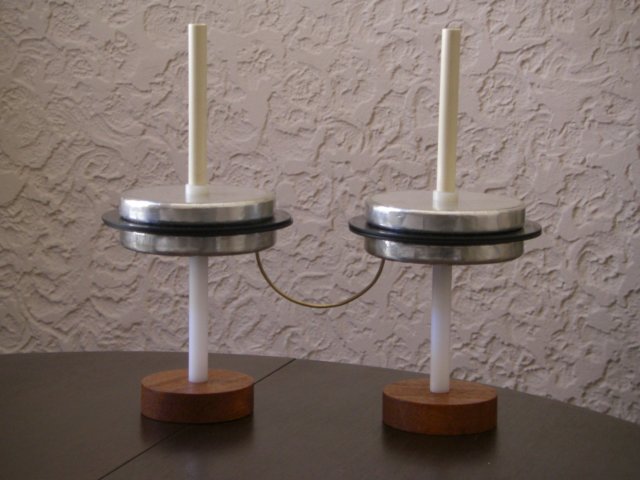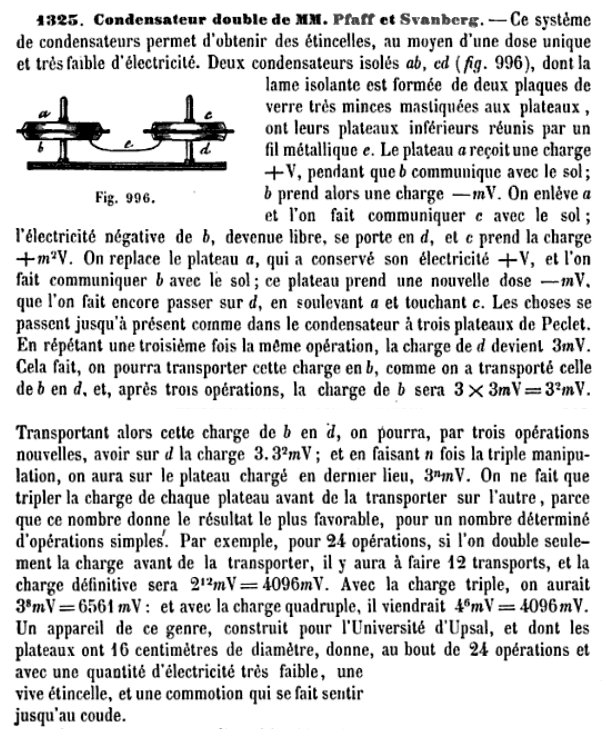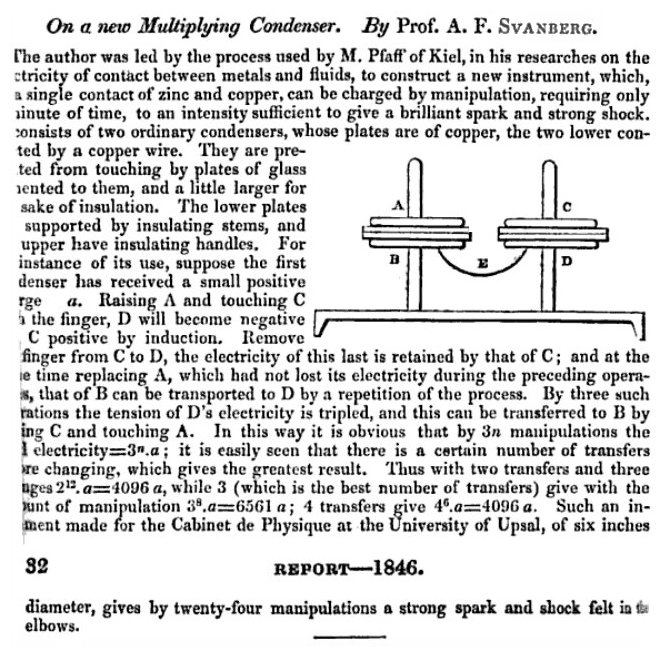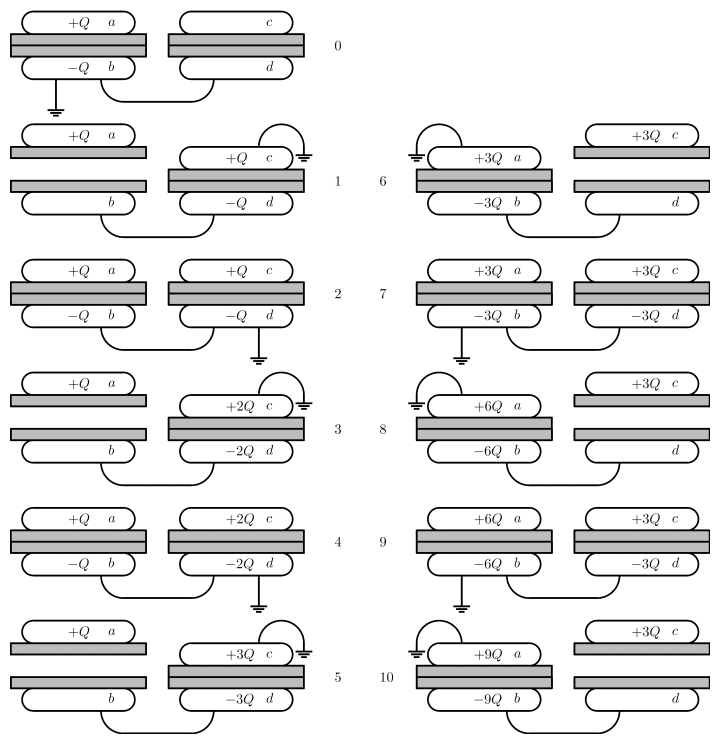
Multiplier prototype

Multiplier prototype
A curious multiplier of electrical
charge using four insulated metal plates with a complex
sequence of manual operations appears in the book by Daguin [54], with
a summary description and without reference to origin:

P. A. Daguin, "Traité
Élémentaire de Physique," 1856.
It works in a way similar to
Péclet's condenser, with one of the
plates split in two for
convenience and symmetry, and changing the roles of the plates
periodically. The same operations can be repeated with the
three plates of Bennet's doubler, if one
manages to keep track of the long sequence of operations. Some
investigation revealed that the
first description of this device was presented by Svanberg in 1846, and
published in the "Report of the annual meeting of the British
Association for the Advancement of Science in 1847 (pp. 31-32): The
description is the same of the book.

Report of the BAAS, 1847.
The operation is best described by the
figure below, that
shows two triplication cycles, starting from a configuration where the
capacitor a-b is charged (0), as described in
the texts above. The full
triplication cycle (1)-(5) does not require the repetition of position
(0), and so requires five manipulations, as seen, after the first that
requires six. The sequence of operations is easy to remember, with
plates
c and d, and then a and b, being alternately grounded by a
touch, starting at the upper plate. Three touches produce duplication,
five touches triplication, seven quadruplication, and so on.

Created: 28 January 2011
Developed and maintained by Antonio Carlos
M. de Queiroz.
Return to Electrostatic Machines